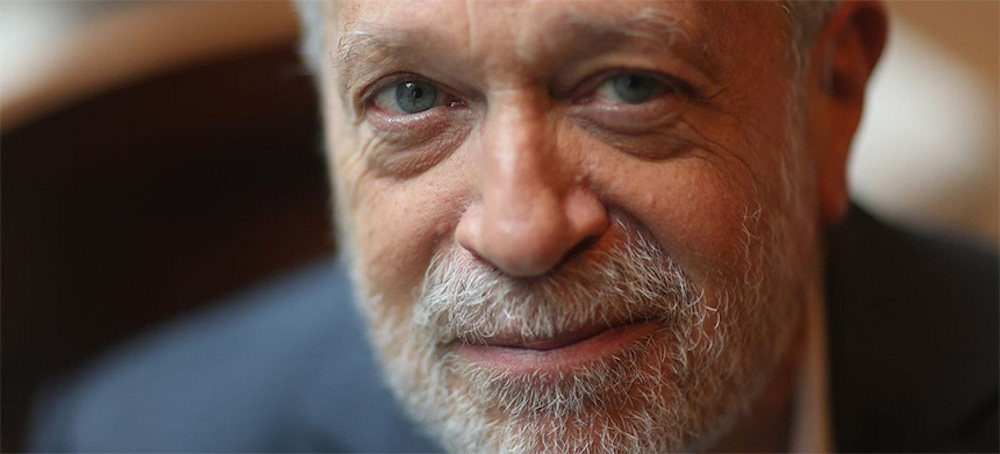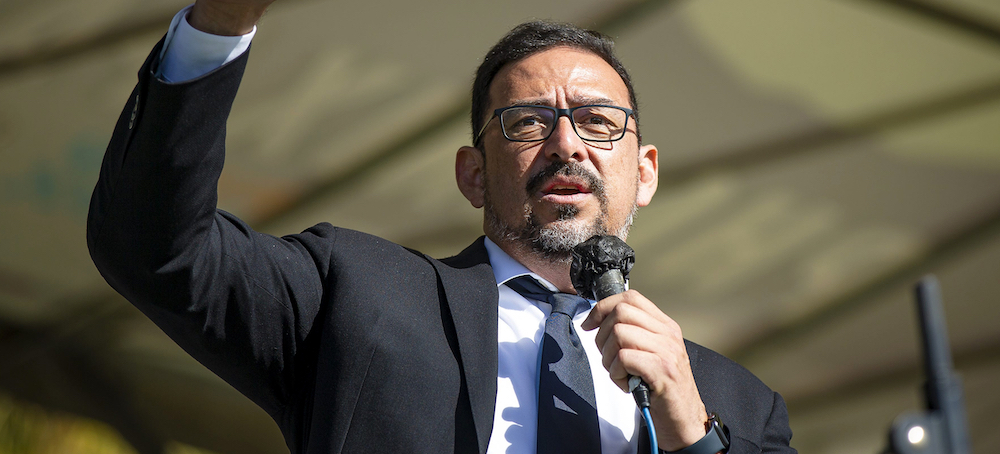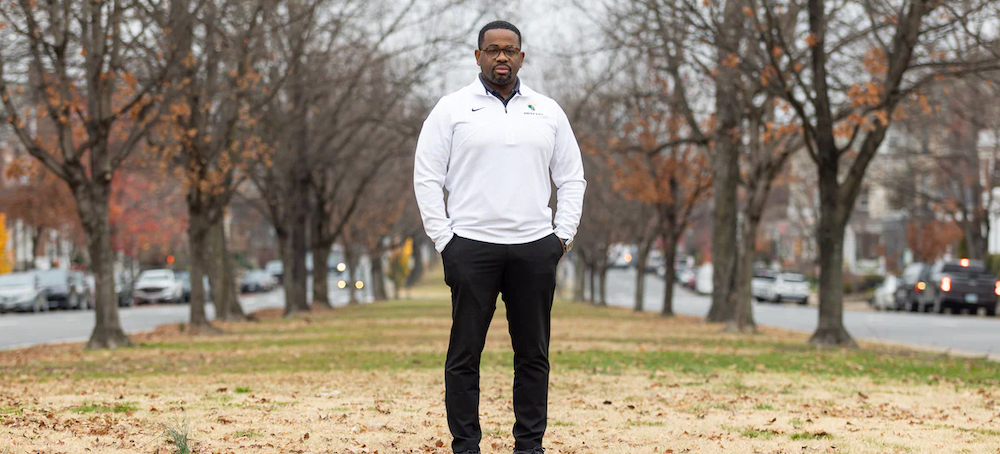
03 January 23
Live on the homepage now!
Reader Supported News

Robert Reich | It's Hard to Believe, but Things Are Getting Better. They Will Continue to if We Keep Up the Fight
Robert Reich, Guardian UK
Reich writes: "It was quite a year. Some of the regressive forces undermining our democracy, polluting our planet, widening inequality and stoking hatred have been pushed back."
Setbacks notwithstanding, we are better today than we were 50 years ago, 20 years ago, even a year ago
It was quite a year. Some of the regressive forces undermining our democracy, polluting our planet, widening inequality and stoking hatred have been pushed back.
This is a worthy accomplishment and cause for celebration. It offers hope that the Trump years are behind us and the hard work of building a decent society can resume.
But this is no time for complacency. No one should assume that the battle has been won.
The anti-democracy movement is still fulminating. Trump is still dangerous. Corporate malfeasance continues. The climate catastrophe is worsening. Inequality is widening. Reproductive rights have been dealt a major setback. The haters and bigots have not retreated.
These regressive forces have many weapons at their disposal – lobbyists, money to bribe lawmakers, giant media megaphones, the most rightwing US supreme court since the 1930s, a Republican party that has lost all moral bearings and, starting soon, a Republican-controlled House of Representatives.
But their most powerful weapon is cynicism. They’re betting that if they can get most of us to feel like we can’t make a difference, we’ll stop fighting. Then they can declare total victory.
We must keep up the fight.
Here’s the thing to keep in mind. Setbacks notwithstanding, we are better today than we were 50 years ago, 20 years ago, even a year ago.
We’ve strengthened labor rights and LGBTQ+ rights. Most Americans are intent on strengthening women’s rights and civil rights.
Most also want to extend Medicare for all, affordable childcare, paid sick leave and end corporate monopolies and corporate dominance of our politics.
We have clean water laws and clean air laws. We’ve torn down Confederate statues and expanded clean energy.
And we’ve got a new generation of progressive politicians, labor leaders and community organizers determined to make the nation and the world more democratic, more sustainable, more just.
They know that the strongest bulwark against authoritarianism is a society in which people have a fair chance to get ahead. The fights for democracy, social justice and a sustainable planet are intertwined.
The battle is likely to become even more intense this coming year and the following. But the outcome will not be determined by force, fear or violence. It will be based on commitment, tenacity and unvarnished truth.
It is even a battle for the way we tell the story of America. Some want to go back to a simplistic and inaccurate narrative where we were basically perfect from our founding, where we don’t need to tell the unpleasant truths about slavery, racism, sexism, homophobia, xenophobia and all the other injustices.
But there is another story of America, one of imperfection but progress. In this story, which is far more accurate, reformers have changed this nation many, many times for the better.
From Martin Luther King Jr to Ruth Bader Ginsburg to, more recently, Stacey Abrams, Alexandria Ocasio-Cortez, Chris Smalls (who led the victory of Amazon’s Staten Island warehouse workers), Jaz Brisack (who led Starbucks workers) and Maxwell Alejandro Frost (the first member of Gen Z elected to Congress), and many others – individuals have repeatedly changed the course of history by refusing to believe that they could not stand up to repression, bigotry and injustice.
You don’t have to be famous to be an agent of positive change. You don’t have to hold formal office to be a leader.
Change happens when selfless individuals, some of whose names we will never know, give their energies and risk their livelihoods (and sometimes their lives) to make the world more humane.
Small actions and victories lead to bigger ones, and the improbable becomes possible.
Look, I know: the struggle can be exhausting. No one can go all in, all the time. That’s why we need to build communities and movements for action, where people give what effort they can and are buoyed in solidarity with others.
If at any time you feel helpless or despairing, remind yourself that the fight for democracy, social justice and a sustainable planet is noble. The stakes could not be higher. And we will – and must – win.
READ MORE
 Adrian Fontes. (photo: Monica D. Spencer/The Republic/USA Today)
Adrian Fontes. (photo: Monica D. Spencer/The Republic/USA Today)
How Adrian Fontes Plans to Protect Arizona's Elections From 'MAGA Fascists'
Ed Pilkington, Guardian UK
Pilkington writes: "On 5 January, when Adrian Fontes will be inaugurated as the secretary of state of Arizona, there will be no luxuriating over his appointment, no glitzy made-for-media plans for the first 100 days."
The Democrat who defeated a hard-right extremist in the midterms to be the next secretary of state doesn’t mince words
On 5 January, when Adrian Fontes will be inaugurated as the secretary of state of Arizona, there will be no luxuriating over his appointment, no glitzy made-for-media plans for the first 100 days.
“I don’t have time for those kinds of things, I’ve just got to get to work,” he said.
The sense of urgency is understandable. As secretary of state, Fontes will be responsible for overseeing all statewide elections in Arizona. The state found itself at the frontline of efforts to subvert democracy in the wake of Donald Trump’s lie that the 2020 presidential election was stolen from him, with Republicans staging a widely derided “audit” of the count and attempting to send fake electors to Washington.
That includes federal elections, and with them the 2024 presidential election in which Trump is attempting a comeback. Arizona counties are already preparing for the next battle for the White House, with primary elections to select the two main parties’ nominees only 15 months away.
“It’s not that far away. We will have to work at lightning speed,” Fontes said in an interview with the Guardian from his campaign office in Scottsdale, outside the state capital, Phoenix.
The US continues to confront the threat to democracy unleashed by Trump in a huge legal campaign after the 2020 presidential election to overturn his defeat and then 2021’s January 6 insurrection at the US Capitol.
Fontes has more experience dealing with the crisis than most. In November’s midterm elections he fought against, and defeated, Mark Finchem, one of the most notorious election deniers – who was present at the Capitol on 6 January.
The contest appeared at times to be unnervingly close, attracting national and international attention. In the end, however, Fontes won with a comfortable margin, taking 52% of the vote to Finchem’s 48%.
“We won by about 120,000 votes – we put it away handily,” Fontes said.
But the result is not grounds for complacency, Fontes believes. From his perspective, given the scale of the danger posed by Finchem and his ilk, the outcome should have been much clearer.
“Our victory was more narrow than we would have liked. We should have won by 20 points, and sent a much stronger message. Nobody should sleep easy on the Maga fascist threat that still exists,” he said.
“Maga fascist” is Fontes’ preferred terminology for “election deniers”. He uses the phrase liberally, referring to Donald Trump’s election slogan, “Make America Great Again” (Maga), which is used by opponents to indicate the former US president’s shrinking and increasingly rightwing base of loyal voters.
It indicates how Fontes plans to shore up democracy in his new role as Arizona secretary of state.
“I use the words ‘Maga fascists’ because it’s the truth,” he said. “These people are not Grand Old Party Republicans; they are Maga fascists. There is no reason for me to call them by anything other than what they are. If they feel a little sensitive about that, then maybe they ought to reconsider their position vis-a-vis American democracy and stop acting like fascists.”
His remarks could be construed as hyperbole. But when it comes to the attack on democracy, Arizona and hyperbole go together; as one commentator put it, the state is the “final frontier” for election denialism.
Trump’s playbook, in which legitimate elections are denounced as riddled with fraud when he or his anointed candidates do not win, was deployed again in the Arizona midterm election. Several counties controlled by Republicans delayed certification of their results despite being able to produce no evidence of any substantial problems.
Kari Lake, the Trump-endorsed Republican candidate for governor who was defeated by the current secretary of state, Democrat Katie Hobbs, continues to refuse to concede. Lake filed a lawsuit in Maricopa, the state’s most populous county, challenging the certification and claiming to be the official winner.
Lake’s suit was rejected by a court, and Democrats – and swing voters – have been heartened by Hobbs’ and Fontes’ victories as an important element in the national thwarting of the predicted Republican “red wave” and defeat of extremists in the midterms.
Nevertheless, Fontes sees Lake’s dogged refusal to accept the outcome of a legitimate count as evidence of the ongoing peril the country is in.
“We must stop pretending these guys have legitimate complaints, catering to their eggshell sensitivities. We must confront them again and again, treating them like the enemies to democracy that they are. We’re not name-calling, we’re truth-telling – there’s a big difference,” he said.
Fontes served for four years in the 1990s in the US Marine Corps, and went on to a career as a lawyer and prosecutor. He first stood for public office in 2016, when he was voted in as recorder of Maricopa county, introducing him to the increasingly volatile world of Arizona’s election administration.
Once in the hot seat as Arizona’s chief election official, Fontes intends to use his clout to press the state legislature to increase penalties against anyone threatening or intimidating election workers.
During the midterm elections, self-appointed “monitors”, some wearing tactical gear, some visibly armed, staked out outdoor ballot drop boxes that were part of the legal means of casting a vote, sometimes taking pictures of voters’ car registration or asking them questions.
“We had folks with long rifles and camouflage gear ‘guarding’ our ballot drop boxes,” Fontes said. “That was asinine. Those folks should be prosecuted as the domestic terrorists that they are.”
Any attempt at intimidating election workers should be severely dealt with, he said. “We need to be aggressive – not just assertive, but aggressive – in pursuing these threats, because elections are the gold thread that holds the whole fabric of our society together. We’ve got to defend them fiercely.”
READ MORE
 The era of weak demand is over. (image: Megan Paetzhold/Ewing Galloway/Alamy)
The era of weak demand is over. (image: Megan Paetzhold/Ewing Galloway/Alamy)
Eric Levitz | When Supply, Not Demand, Is the Problem
Eric Levitz, New York Magazine
Levitz writes: "The COVID pandemic, and the government's response to it, fundamentally changed our economy's challenges. To meet them, liberals will need to change their approach to building out the welfare state and green economy."
The 2008 financial crash ripped a giant hole in the incomes and wealth of Americans, limiting their ability to afford everything from big-ticket purchases like cars to their rent. The government declined to fill that hole in deference to a superstitious fear of deficits. This kept many millions of U.S. workers on the economy’s sidelines and myriad industrial facilities underutilized. For years, America’s capacity to produce goods and services exceeded consumers’ ability to pay for them.
This was a tragic state of affairs for the U.S. economy but, in some respects, a convenient one for American liberalism. Since the days of LBJ’s Great Society, liberals’ reform ambitions have largely focused on demand-side policy. The Affordable Care Act effectively gives Americans more money to spend on medical services through insurance subsidies. Food stamps give low-income households more money to spend on groceries. Social Security increases seniors’ disposable income.
In a demand-constrained economy, these kinds of policies are free lunches: Since there is spare productive potential, putting cash in people’s pockets not only benefits them directly but also aids the broader economy, as higher consumer spending encourages growth.
Relatedly, in an economy with relatively low inflation — like America’s from 2009 through 2020 — the government need not offset new spending with taxes in order to keep prices from shooting through the roof. And that too was very convenient for liberals, who are perennially tasked with reconciling their movement’s expansive vision for the welfare state with Americans’ aversion to higher tax rates.
But the era of weak demand is over. The COVID pandemic, and the government’s response to it, fundamentally changed our economy’s challenges. To meet them, liberals will need to change their approach to building out the welfare state and green economy. Specifically, they will need to make voters more comfortable with tax increases and themselves more comfortable with deregulation.
Joe Biden’s agenda was formulated during the decade of weak demand and bore the marks of that bygone era. The Build Back Better plan sought to drastically increase Americans’ capacity to acquire child care, health care, pre-K, higher education, housing, and elder care and establish a monthly cash benefit for nearly all households with children. Yet Biden did not ask taxpayers to pay the full bill for such expansions. Instead, the White House concealed the mismatch between its ambitions for social spending and aversion to tax hikes beneath a panoply of budget gimmicks.
By the middle of 2021, however, the economy’s free lunches had been consumed. Thanks to trillions of dollars in pandemic-relief spending, the COVID recession left no substantial hole in consumer spending, but it hammered the economy’s productive capacity. Outbreaks shuttered factories while worries about illness chased vulnerable workers out of the labor force. Meanwhile, many manufacturers expected the recession to be much deeper and longer than it was and prematurely slashed orders. When Uncle Sam started mailing out checks and cooped-up consumers began spending a massive share of their incomes on goods (instead of services), producers were caught unprepared. Demand outran supply. Inflation soared. Build Back Better gave way to the more modest Inflation Reduction Act, and Biden’s plans for greatly expanding social welfare went unfulfilled.
The age of excess supply probably isn’t coming back anytime soon. The U.S. population is old and getting older. Demand for medical services and elder care will grow even as the proportion of prime-age workers in the nation will shrink. Meanwhile, the green transition will stress the economy’s resource base: The more critical minerals needed for electric-vehicle batteries, the fewer available for cell phones; the more construction laborers needed for building transmission lines, the fewer at the housing sector’s disposal.
And if America fails to build out renewables as fast as fossil-fuel production declines, energy-price shocks could ensue. The asset manager BlackRock recently declared that America has entered a new economic regime characterized by “production constraints” and “brutal trade-offs.”
It is possible that the Federal Reserve’s interest-rate hikes will plunge the U.S. into a deep recession, thereby generating mass unemployment and tilting the supply-demand ledger. But that is not the future that liberals want. Rather, they want an America in which unemployment is virtually nonexistent, the provision of social services is vastly expanded, and the economy is rapidly decarbonized.
Liberals cannot realize that vision without sweating the details of supply-side policy. Contrary to much conservative commentary, our economy’s supply constraints have not weakened the case for Biden’s proposed expansion of social services but strengthened it. Growing America’s productive capacity requires increasing women’s labor-force participation rate, which currently trails that of men by nearly 12 percentage points. And doing that requires increasing the availability of child care.
Left to its own devices, the private sector has proved incapable of supplying an adequate number of child-care workers. As labor scarcity increased job opportunities over the past two years, 80,000 workers fled the child-care sector, typically for better-paying fields. The solution to this problem is to simultaneously increase the ability of working families to pay for child care (by giving them subsidies) and the care sector’s attractiveness to workers (by mandating higher wages). Meeting the rising demand for elder care requires similar reforms.
Yet in a supply-constrained economy, increasing demand in the care sector without triggering inflation necessitates reducing it somewhere else. That means raising taxes on ordinary Americans so that they reduce their spending on less socially vital things.
Biden famously forswore tax increases on households earning less than $400,000 a year. Liberals can no longer deficit finance their way around the problem such pledges create, which means they need a strategy for increasing the political palatability of tax hikes. In the long term, this should involve boosting voter confidence in government by improving the public sector’s performance at both supplying services and executing projects. In the short term, Democrats must lower the ceiling on the tax-exempt middle class; the party must be able to collect more revenue from households earning more than $250,000 a year.
Liberals will also need to loosen their attachment to supply-constraining regulations. America’s current regulatory framework makes it exceedingly difficult for both the public and private sectors to build housing and clean-energy infrastructure. Environmental laws that help NIMBYs kill renewable-energy projects or tie them up in court for years must be rewritten. Zoning rules that make it extremely challenging for developers to build housing in high-demand areas must be abolished.
Even in the care sector, excessive regulations stymie supply. The U.S. is currently suffering from a shortage of doctors, in no small part because of its stringent licensing requirements. Other nations also make it much easier for foreign-trained physicians to practice within their borders. But rather than fighting to reduce unnecessary licensing requirements, some liberals have recently sought to expand them by making college degrees mandatory for child-care workers.
By reflexively opposing calls for deregulation, liberals do not uphold progressive ideals so much as they undermine them. An America in which housing, energy, and medical care are chronically undersupplied is one in which progressives’ vision for the country will be impossible to realize. In other words, liberals will need to develop their own supply-side economics.
READ MORE
 Devon Henry stands near the former site of the Robert E. Lee statue, which his company was hired to remove, on Monument Avenue in Richmond. (photo: Parker Michels-Boyce/WP)
Devon Henry stands near the former site of the Robert E. Lee statue, which his company was hired to remove, on Monument Avenue in Richmond. (photo: Parker Michels-Boyce/WP)
White Contractors Wouldn't Remove Confederate Statues. So a Black Man Did It.
Gregory S. Schneider, The Washington Post
Schneider writes: "He didn't seek the job. He had never paid much attention to Civil War history. City and state officials said they turned to Team Henry Enterprises after a long list of bigger contractors - all White-owned - said they wanted no part of taking down Confederate statues."
Workers in bright yellow vests circled up in the morning chill. Some clutched cups of Starbucks coffee, a last comfort before beginning the hard work of dismantling a statue of Confederate Gen. A.P. Hill in the middle of an intersection.
As a small group of Confederate heritage defenders assembled nearby — at least one of them armed — city safety coordinator Miles Jones lectured the work crew on wearing hard hats and eye protection. And who, he asked, would be the site supervisor? A bearded man in Ray-Ban sunglasses and a Norfolk State University sweatshirt stepped forward.
“What’s your name, sir?” Jones asked.
“Devon Henry.”
“Devon Hen—” Jones began, then dropped his voice respectfully. “Oh, Mr. Henry. Of course.”
The name carries weight in Richmond these days. Over the past three years, as the former capital of the Confederacy has taken down more than a dozen monuments to the Lost Cause, Henry — who is Black — has overseen all the work.
He didn’t seek the job. He had never paid much attention to Civil War history. City and state officials said they turned to Team Henry Enterprises after a long list of bigger contractors — all White-owned — said they wanted no part of taking down Confederate statues.
For a Black man to step in carried enormous risk. Henry concealed the name of his company for a time and long shunned media interviews. He has endured death threats, seen employees walk away and been told by others in the industry that his future is ruined. He started wearing a bulletproof vest on job sites and got a permit to carry a concealed firearm for protection.
The drama interrupted Henry’s careful efforts to build his business. But after removing 24 monuments in Virginia and North Carolina, Henry, 45, has grown more comfortable with his role in enabling a historic reckoning with social injustice across the South. The threats haven’t let up; Henry has simply learned to live with them.
“My head’s in a different place now,” he said. “It’s like, I’m not scared to cross the street, but I’m always going to look both ways, right? So I’m not totally oblivious to who I am and what I’ve done, but I’m just not letting fear kind of drive what I do.”
Over and over, history-minded friends directed Henry to the words of John Mitchell Jr., the civil rights pioneer and editor of the Richmond Planet, a groundbreaking African American newspaper. In 1890, the year the state erected an enormous statue of Robert E. Lee on what would become Monument Avenue, Mitchell wrote about the resilience of the Black person in society.
“The Negro … put up the Lee monument,” Mitchell wrote, “and should the time come, will be there to take it down.”
****
The call that changed Henry’s life came in the middle of a business meeting in early June 2020. He ignored it, at first. But his phone kept going off, and finally a friend texted — you might want to pick up.
On the line was Clark Mercer, the chief of staff for then-Gov. Ralph Northam, with a wild proposition: Would Henry’s construction company be willing to oversee the dismantling of the giant statue of Lee on state-owned property along Monument Avenue?
Such a thing was nowhere on Henry’s radar screen. His company was experienced at building things, and at preparing sites for construction.
Outside of work, though, change was in the air. Partly in reaction to the deadly Unite the Right rally in Charlottesville in 2017, the General Assembly had passed a bill early in 2020 to allow localities to take down Confederate statues. That May, the murder of George Floyd by Minneapolis police touched off nationwide racial justice protests that in Richmond focused on Monument Avenue and its iconic memorials.
Northam, a Democrat, decided it was time to act. Protesters and police were clashing every night. He wanted to move fast.
Mercer and Henry had met some time before at an event at Norfolk State, Henry’s alma mater and where he sits on the board of visitors. Now Mercer confessed that he was reaching out because he was desperate. Everyone else had turned him down.
“I was pretty forthcoming that we hadn’t been able to find anybody to take on the job,” Mercer said in an interview. In fact, the responses from other contractors were “pretty overtly racist,” he said, including language that he found threatening. “Devon seemed to understand the magnitude of what I was asking him.”
Henry never paid much attention to Confederate monuments. Growing up in Hampton and Newport News, he went to Robert E. Lee Elementary School, but the name meant little to him. There were bigger concerns.
His mother had been only 16 when Henry was born in Lumberton, N.C. She moved to Hampton Roads and took up work in McDonald’s restaurants to support herself and her baby. At 14, Devon began taking shifts at McDonald’s as well.
He got good grades in school and developed an ambition to be a doctor. But after majoring in biology at Norfolk State, Henry found himself drawn to business. After college, he got into the corporate leadership program at General Electric, and the company paid for him to get a master’s degree as he worked in its infrastructure division. He immersed himself in biographies of business leaders — such as Ray Kroc of McDonald’s.
His mother, meanwhile, had taken advantage of training programs at McDonald’s, climbed the ladder and then — by the time Henry was grown — became a franchisee. She wound up owning five restaurants in the Richmond area.
Her example of hard work pushed Henry. When he learned of a small construction business going up for sale in the city of Suffolk, he made a snap decision to leave G.E. and put all his savings into buying it. Henry and his wife commuted 90 minutes every day from Richmond to Suffolk — in separate cars so one could get back and pick up their daughter from school.
Over time, Henry expanded the business and relocated it closer to home. He always tried to be socially conscious, becoming a Federal Emergency Management Agency contractor to help people in need. But in early 2020, one particular job transformed his outlook about what was possible: Team Henry was the general contractor for construction of the Memorial to Enslaved Laborers at the University of Virginia.
“It was and is still today our most meaningful project,” Henry said. Winning that job “wasn’t about the money. It was about the meaning and the response that it would have. Giving voice to the voiceless.”
He attended Charlottesville community sessions to hear people speak about what they wanted the memorial to convey. He helped pick out the stone and flew to Wisconsin to watch it being cut. Then he carefully fit each piece together into a sweeping circle — in honor of people whose lives had been all but erased.
Participating in something like that “gives you purpose, and meaning for your work,” he said.
So when Mercer called to pitch him on taking down a Confederate monument, Henry viewed it differently than he might have before.
He had come to understand that those statues — especially Lee — were like religious objects to their defenders. They had stood more than a century as totems of a powerful mythology: that slavery was somehow benign, that Southerners were the noble victims of Northern aggression, that things were better when White people presided over an orderly world. The Lost Cause.
For a Black man to destroy such a symbol would put his life, his family, his livelihood on the line. Henry knew that in Louisiana, a White contractor withdrew from the job of removing four Confederate monuments after receiving death threats. Someone torched the man’s car.
But Henry saw this as a powerful chance to give a bit of justice to the souls represented by the memorial to enslaved people. He wanted to talk with his family and his team at the company before committing. Mercer told him to take a few hours.
Henry immediately went home and rounded up his wife and teenage daughter and son. He explained that he had an opportunity that would be somewhat controversial, and described it. “My son was like, well Dad, look, you’re going to always be my hero so it doesn’t really matter,” Henry said. “But this would be really cool.”
His wife and daughter agreed.
At work, some employees “really didn’t like the idea of it at all and were not in favor of us moving forward,” he said. “Some were more about security, safety. Some just didn’t believe in the work.” A few who were opposed eventually left the company.
But Henry called Mercer back and agreed to do it. Once on board, he pushed to act quickly, without warning the public. But as soon as Northam called a news conference to announce that the statue was coming down, a handful of local residents filed a lawsuit to stop him. Court proceedings put the project on ice for more than a year.
Within just a few weeks, though, Henry got another call. Richmond Mayor Levar Stoney wanted to take down a whole series of monuments on city property. Bob Steidel, a deputy city administrator tasked with making it happen, had run into the same problem as Mercer trying to find a contractor. Then someone with the state suggested Henry.
“He was the only one to step up, and I give him all respect for that because in June of 2020 it was a difficult decision to be made,” Steidel said in an interview. “Personally, professionally — he had everything at stake, and he still did it.”
Once again, Henry had to move fast. His biggest need was finding a crane that could lift the statues. He thought he had one lined up in Hampton Roads, but when the company’s patriarch found out that his son had tentatively agreed, he threatened to cut the son out of the business, Henry said. Eventually, Henry found a willing crane operator in Connecticut.
The next big issue: security. This was all being done on the fly. Protesters and police were facing off on the streets around the statues every night. Virginia’s new law allowing the monuments to come down hadn’t technically gone into effect yet, and Richmond’s acting city attorney refused to give Stoney his blessing. City police didn’t want to participate under those circumstances, Stoney said in an interview.
Henry used some divine pressure to solve the problem. He attended the same church as Richmond Sheriff Antionette Irving. With the pastor’s help, he persuaded Irving to provide about a half-dozen deputies to keep watch at the work site.
On July 1, 2020, the first target — a statue of Gen. Stonewall Jackson at an intersection along Monument Avenue — came down amid chaos on a cinematic scale.
Through miscommunication, traffic control set up barricades at the wrong intersection. Henry had to maneuver his equipment into place as a handful of deputies struggled to keep traffic at bay. His younger brother showed up to make sure Henry was safe.
Thousands of onlookers chanted, screamed and taunted the bronze figure of Jackson high on his horse. One tearful Confederate defender begged for work to stop; deputies had to haul him away. As TV cameras carried the scene live nationwide, Henry’s men kept trying and failing to get the statue detached from its stone base. And then the heavens poured torrential rain.
Stoney, monitoring from a secret location to avoid being served any court papers that might halt the action, kept calling Henry. What was the delay? Henry’s mother kept calling with the same question. He quit looking at his phone. Crew members cut a hole in the base of the statue and discovered an underpinning holding it in place. Once that was disconnected, Henry signaled the crane to put some tension on the line. When the statue wobbled, Henry felt a sudden rush of panic.
“I’m like, oh, s---, this is really about to happen,” he said.
Finally, with church bells ringing and lightning flashing, the crane lifted the statue high into the rainstorm just as a mighty clap of thunder drowned out the roaring crowd.
“People are crying, people are jumping up and down, I’m going crazy,” Henry remembered. “At this point, law enforcement had no control. It was a hundred percent chaotic.” As the crane lowered the statue to the ground, Henry was awed by the size of the thing. The crowd surged forward; someone said they wanted to urinate on it. Henry hollered for people to stay back.
Then he noticed one African American woman looking at him with an expression of utter disgust. Henry said he felt confused; wasn’t she happy at what he had just done?
“She was like, ‘Why are you showing so much care to the statue? Just drop it. Just let it go. Just kick it over. Nobody cared about George Floyd, but you care about this statue?’”
At that moment, Henry realized just how difficult this work was going to be. He resolved to stay professional. “I wasn’t going to let my feelings, or being a Black man and knowing what these statues represent, get in front of me being a professional and doing my job,” he said.
****
Over the next few weeks, Henry and his team moved on to dismantle more than a dozen other monuments around Richmond under a $1.8 million umbrella contract. Though Henry initially concealed his company behind a shell called NAH LLC — as in, “nah, these statues need to come down,” he said — local observers soon caught on. A political rival on the City Council accused Stoney of improperly awarding the contract because Henry had donated $4,000 to the mayor’s campaign several years before. Investigators found no evidence of wrongdoing.
Henry’s crew was getting better at its unusual work, and was becoming in demand as more and more localities followed suit. He removed the statues of Lee and Jackson in Charlottesville that had been the focus of the white-supremacist rally. He took down a statue of Jackson at Virginia Military Institute, where someone threw a bag of fried chicken at the workers. He was invited to remove a statue in Shreveport, La., Henry said, but declined because the work included reinstalling the monument on a battlefield.
“I wanted no part of that,” he said.
Fielding threats became routine, from racial slurs shouted by passing vehicles to menacing voice mails. Henry referred all those to the police, who had eventually become close partners. Someone called the crane company and warned that they’d never get back to Connecticut. Callers tried to get the federal Occupational Safety and Health Administration to shut down the work sites. Others tried to get the labor union to step in.
All the while, Henry was planning for the big one — the huge statue of Lee on state-owned property. The Supreme Court of Virginia cleared away the last legal challenge, and work was set for Sept. 8, 2021.
That day was bright and sunny. Police cleared the vast traffic circle around the monument. Onlookers, kept at a distance, danced and sang with the happy air of a street party.
Henry rode a bucket truck up alongside the statue as his crew, now experts at this kind of work, quickly removed the bolts that secured it to the base. Henry actually slowed the process for a few moments; he needed to give Northam time to get there from the State Capitol.
Suddenly, Henry felt overcome with emotion. He thought about Jimmy Palmer, a rigger with the crane company who had become a close friend but died of cancer before he could help bring Lee down. He thought about all the elderly Black people who had told him they never thought they’d see this day. And about how they thanked him for fulfilling Mitchell’s vision.
“It hit me like a bag of rocks,” he said. He told the bucket truck operator to take him down. “I just started crying.”
The statue was hoisted off its pedestal in less than an hour after 131 years of towering over Richmond’s grandest street. Henry’s mother — Freda Thornton, who now lives in South Carolina — ran through the security barricade and surprised her weeping son with a big hug.
“I just kind of held him for a minute, just to let him get himself together,” Thornton remembered. “I told him, ‘You did it, and God’s favor protected you and it’s over.’ I said, ‘It’s over, the work is completed now.’”
There was, of course, one more Richmond statue to come down. The A.P. Hill monument was different because the general’s remains were buried beneath it. Court proceedings for moving a grave delayed the project, giving Henry and the city time to plan.
In the meantime, Henry said, his business boomed. If some potential clients avoided him because of the statues, more sought him out. “We’re busier than we’ve ever been,” he said; Team Henry has grown to 200 employees after starting out 15 years ago with just four.
The company won recent contracts to build a bank and a credit union, and to rehabilitate a structure that once housed enslaved Africans at what’s now the Richmond Hill religious retreat.
As he thought about the significance of the Confederate statues, Henry decided he wanted to find a way to turn the destruction into something positive. That led to a venture in which artists of color created digital images of statues being dismantled that can be sold as NFTs, with all proceeds going to charities. “We want to kind of change the narrative a little bit about the removal and what they mean,” Henry said.
The Thirteen Stars project — a reference to the Confederate battle flag — was set to debut in 2022 but stalled when the cryptocurrency market and NFT craze both cooled. Henry said he’s ready to launch again.
When it came time in early December to finally get the Hill removal underway, Henry approached it methodically. From his point of view, there would be little emotion with this one. That was for the Hill relatives and funeral home workers on hand to take care of the general’s remains.
Henry’s mission as the man who finally drove the Confederates out of Richmond was nearly complete. He had a brief, blunt message that morning for the chilly workers as they prepared to do the unusual work that has become so familiar.
“It’s the last one,” he told them. “Let’s do it right and get out of here.”
READ MORE
 California Republican Rep. Kevin McCarthy was nominated by House Republicans to serve as the next House Speaker, but he's struggling to lock down enough votes to win the election by the full House of Representatives on Tuesday. (photo: Chip Somodevilla/Getty Images)
California Republican Rep. Kevin McCarthy was nominated by House Republicans to serve as the next House Speaker, but he's struggling to lock down enough votes to win the election by the full House of Representatives on Tuesday. (photo: Chip Somodevilla/Getty Images)
McCarthy Scrambles for Votes to Be Elected Speaker of the House
Deirdre Walsh, NPR
Walsh writes: "Rep. Kevin McCarthy was nominated by House Republicans for the top leadership job in November but hours before his party takes control of the House of Representatives he's scrambling to lock down a majority to get the gavel."
Rep. Kevin McCarthy was nominated by House Republicans for the top leadership job in November but hours before his party takes control of the House of Representatives he's scrambling to lock down a majority to get the gavel.
Previous speakers have faced defections in the first vote of the session to install the top leader, but if McCarthy fails to get a majority on Tuesday it will be the first time in 100 years a speaker needed multiple ballots to win.
The California Republican faces a bloc of critics who want changes to the way the House operates. Although he's given in to many of their demands, he remains short of the votes needed. Instead of celebrating their return to the majority on the first day, McCarthy and other GOP leaders are sorting out how to respond to an open rebellion that will showcase division and cast doubt on their ability to govern.
Concessions still haven't secured votes for speaker
Republicans will only hold razor-thin majority — just four seats — after Democrats had a better-than-expected showing in competitive contests in the 2022 midterms. But there are potentially more than a dozen GOP lawmakers who will vote for someone other than McCarthy. Many of the holdouts sought and got support for new rules on how legislation is considered in the House, and how oversight investigations of the Biden administration will be structured.
McCarthy also agreed to to change a rule that would allow a group of five members to offer a resolution to remove the speaker. He insisted for weeks he wouldn't agree to lower the threshold on how many sponsors are needed on a "motion to vacate the chair" because it effectively weakens the power of the speaker. But McCarthy gave into pressure from those on the right since he has such a small margin and can't afford more than a few defections.
It's not clear McCarthy's concessions are helping him secure support.
Pennsylvania GOP Rep. Scott Perry, a leading McCarthy critic who signed onto a letter with nine other Republicans circulated on New Year's day, tweeted: "nothing changes when nothing changes." He cited the letter, which states "the times call for a radical departure of the status quo — not a continuation of the past, and ongoing Republican failures."
Vote for speaker could go to multiple ballots
If McCarthy fails to win on the first ballot, it will be embarrassing to the top Republican who led his party's efforts to win back the majority. McCarthy ran for speaker in 2015 when then House Speaker John Boehner stepped down, but withdrew abruptly from the race after conceding he didn't have the votes to win. In the last couple of election cycles, McCarthy led the political effort for House Republicans — raising, along with affiliated super PAC, the Congressional Leadership Fund, roughly a half a trillion dollars and campaigning for GOP candidates across the country. He and his allies predicted a "red wave" in the fall, but ended up eking out just a four-seat majority.
The public vote on the House floor will likely showcase the GOP divisions and chaos. McCarthy's allies insist they won't vote for any alternative candidate, and even if it's messy, they will stick with him.
But nothing else can happen in the House of Representatives until a speaker is elected. It's the only leadership position mentioned in the Constitution.
There have been some discussions about trying to rally around a consensus candidate, but McCarthy's allies have been pushing what they say is an "O.K. " strategy — "Only Kevin." There is potential for the process to drag out for hours or even days if McCarthy is unable to convince some of the holdouts to back him.
McCarthy's No. 2, Louisiana Congressman Steve Scalise, has publicly backed McCarthy and predicted he will be elected speaker. But if McCarthy fails to convince enough members to back him GOP members could turn to Scalise as a potential alternative — or some other conservative candidate.
Scalise, who is in line to serve as House majority leader, released an agenda for the first two weeks of January. He pledged the House would vote on measures to cancel the boost in funding to hire more IRS agents, and bills dealing with border security and abortion. But until the speaker is elected, the House committees can't form, members cannot be sworn in to start the new session, and the rest of the business is stalled out.
READ MORE
 Hundreds of passengers wait in line on Tuesday regarding baggage-claim issues with Southwest Airlines at Baltimore-Washington International Marshall Airport in Baltimore. (photo: Marvin Joseph/WP)
Hundreds of passengers wait in line on Tuesday regarding baggage-claim issues with Southwest Airlines at Baltimore-Washington International Marshall Airport in Baltimore. (photo: Marvin Joseph/WP)
Airline Deregulation Was a Factor in the Holiday Airline Mess
Matthew G. Andersson, The Washington Post
Andersson writes: "As passengers find out that many shortcomings exist in our nation's airline system, they might not appreciate that the airline 'meltdown' affecting millions of travelers around Christmastime was completely avoidable."
Regarding the Dec. 29 front-page article “Southwest didn’t heed warnings, unions say”:
As passengers find out that many shortcomings exist in our nation’s airline system, they might not appreciate that the airline “meltdown” affecting millions of travelers around Christmastime was completely avoidable. The problem goes back to 1978, when the airline industry was deregulated, and competition and profits were prioritized over basic public-utility goals.
By removing government oversight concerning how airlines service routes and charge prices, the marketplace was thought to be a better “regulator” of customer service levels. This has turned out to be largely false. As Southwest’s pilot union has reminded the public, the company has recently distributed hundreds of millions of dollars as stock dividends rather than investing it into the company. If you’re a shareholder, this might be satisfying; if you’re a passenger stranded at an airport over the holidays, you might wonder how senior airline management is making decisions.
The government is almost certainly going to step back into a regulatory role, and its first priority should be setting rules concerning how airlines prepare for disruptions to normal operations. This is not unlike regulating banks to have sufficient “reserves” to cover unexpected financial emergencies.
Matthew G. Andersson, Clearwater, Fla.
READ MORE
 A bat. (photo: Texas Parks and Wildlife)
A bat. (photo: Texas Parks and Wildlife)
This Wildlife Rehabilitator Rescued Over 1,600 Bats During Houston Cold Snap
Zoe Sottile, CNN
Sottile writes: "A Texas wildlife rehabilitator nursed over 1,600 frozen bats back to health in her attic after many of them fell from their roosts during Houston's plunging temperatures last week."
ATexas wildlife rehabilitator nursed over 1,600 frozen bats back to health in her attic after many of them fell from their roosts during Houston’s plunging temperatures last week.
Mary Warwick, the wildlife director at the Houston Humane Society, told CNN that she has been working with bats since 2019, when another cold snap sent Houston’s bats falling from their roosts. But she had never staged a rescue operation quite this large before.
On December 21, temperatures in Houston dropped from the 60s during the day to 22 degrees at night. “That’s a steep drop in temperature for the bats,” Warwick explained. The Houston area is home to eight species of bats, including the tiny Mexican free-tailed bats that roost underneath several bridges in the city.
“As their body temperature dropped, they were no longer able to hold on inside the cavity of the bridge,” Warwick said. “Some of them started to become so hypothermic they lost their footing and dropped.”
Warwick was running errands when she realized she hadn’t received any calls about bats needing help, which was unusual given the cold weather. She headed to one of Houston’s bridges “and saw little dots on the ground,” she said.
“There were about 138 bats that had become hypothermic,” she went on. “They looked dead.”
She went to work collecting the tiny bats in a box in her car, where she used the seat heater to start warming them up. “I live about 40 minutes from the bridge, and by 20 minutes, they were starting to move around, which gave me a lot of hope,” she said.
Warwick returned that night to pick up another 50 frozen bats. Then she received a call from someone who had found 920 more bats in need of help.
At her home, Warwick sorted through the bats to determine which were still alive and which had died, from either the cold or the fall to the ground. She put them in incubators to raise their body temperatures and then administered subcutaneous fluids.
But caring for over 1,000 bats was overwhelming. So she reached out to Bat World Sanctuary, a nonprofit based in northern Texas. Bat World was unable to accommodate such a large contingent of bats, but they helped Warwick come up with a battle plan to care for the frozen creatures.
“We decided once I got them stabilized I could put them in my attic where it’s cool but it’s not freezing, and that would reduce their metabolism so they wouldn’t need to eat, but they would drink water,” she explained.
So Warwick divided the bats, using crates to keep each colony together, and left them in her attic to rest and regain their strength. Several other local citizens also called in bats that needed rescuing, bringing the total to 1,602 recuperating bats in Warwick’s makeshift bat hospital. They spent around three days total in her attic, she said.
Only 115 bats collected died, according to Warwick. “I was very happy with that,” she said. “Especially the initial fall – that’s gotta be a hard fall, falling 20 feet from the bridge. It’s remarkable that these little guys can make it through.”
And on Wednesday, with temperatures in Houston stabilizing, most of the bats were released back to the bridges where they came from. A few still struggled to fly correctly and were returned to the attic, where Warwick said they’ll receive “extra supportive care.”
Warwick and other helpers from the humane society rented a scissor lift to bring the bats as close as possible to their roosting area under the bridge. “We wanted bats to have the best chance of hearing and seeing, getting motivated by their friends,” she explained. “They’re very social, they do actually have friends up there, they know their chirps.”
Warwick said that she enjoys caring for bats partially because “they’re so small and tiny, and sweet.”
Warwick and other rehabilitators that work with bats are vaccinated against rabies so they can safely work with the animals, she explained. The Houston Humane Society recommends that people trying to rescue bats either wear thick leather gloves or avoid touching them at all.
Bats are a crucial element in Houston’s ecosystem, Warwick added. They feed on mosquitoes and insects that eat crops, and also act as an important food source for hawks and other predators.
The Houston Humane Society is currently fundraising for a new facility that will include a dedicated bat room, she said.
“We’ve moved into their territory, where they live,” she said. “It’s important for us to take care of them.”
READ MORE
Contribute to RSN
Follow us on facebook and twitter!
Update My Monthly Donation
PO Box 2043 / Citrus Heights, CA 95611
















